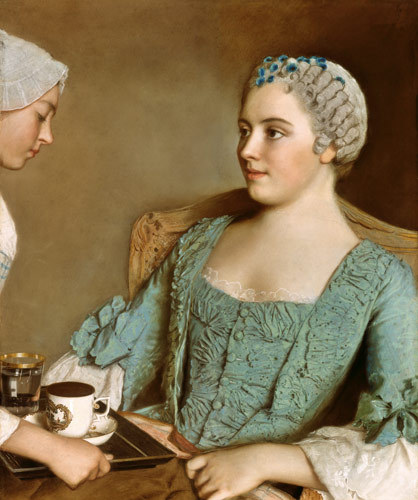Literally meaning "sheep's head" the "tête de mouton" was a discreet hairstyle which gained popularity around the 1750's and remained in style throughout the 1760's. The hairstyle was close-fitted unlike the much more elaborate hairstyles otherwise known at court. The hair would be curled and arranged in neat rows and set close to the scalp. Possibly it was Marie Leszczynska's subtle lifestyle that inspired the hairdo and she is indeed portrayed with her hair in that style in official portraits.
 |
| Marie Josephe de Saxe |
Normally, the curls would be powdered with white powder before being attached to the head. For those who were not blessed with thick, luscious hair it was common to add false hair (human or animal) to add volume. Even though the style was closely fitted at first there was some who took it to whole new heights which meant that the hoods of the females' capes had to be suspended with wires to keep from destroying the style.
As shown on the portrait above it was quite common to decorate the hairstyle with different sorts of accessories - after all, it would not do to be too simple. Artificial flowers, pearls and gemstones were lavishly added to the hairstyle and most women would try to match the colour of their gown with that of their hairstyle's accessories.



No comments:
Post a Comment